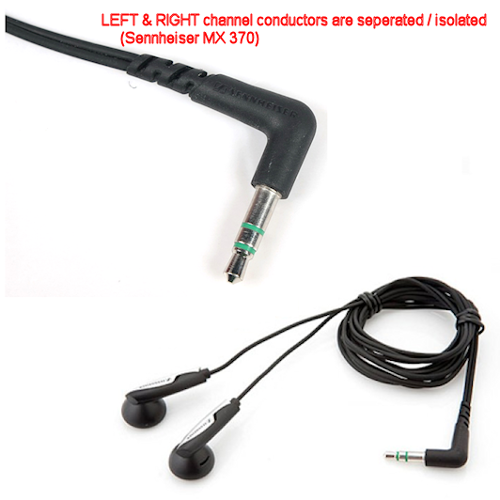Great illustration. Yes, it is correct.
Ok, I see where the trouble is and why it was so misleading to call headphone amps "balanced" when referring to the headphone output.
With regard to the headphone output, the more appropriate term to use is "bridged." However the first amps with bridged outputs were misleadingly called "balanced" and the industry has been calling them that ever since. I have tried to get people to use the correct terminology for years now but it has been hopeless.
I understood you to be referring to crosstalk within the cable itself, which you're going to have even with a bridged amplifier as long as the left and right channels share the same cable. So I thought you were referring to using separate left and right cables, instead of a bridged output.
Ok. With a regular TRS plug/Jack, you have the ground contract resistance that is common to both left and right channels. So by ohms law, any current that flows through that resistance will create a voltage drop that will also be common to both channels, which will result in some amount of crosstalk.
In a bridged amplifier, which uses four contacts, two for each channel, you eliminate that common contact resistance and therefore won't get any crosstalk from that resistance.
So to test for the crosstalk due only to that common contact resistance would require a different test setup. Sorry for the confusion.
se
Hi Steve,
Yes, you've got my original concern when stating 'shared the same cable'.
Dear all,
Please allow me to clarify my thread's original question/concern...
I was not questioning Hi-End/Pro audio equipment. My original concern was on the amount of cross talk on the budget ear-buds & headphones, due to bad choice of cabling. Now since budget is a relative term, I'll just put a ball park number of say ... below $300 USD.
To illustrate my point about the cabling and crosstalk, please see the two images attached here...


The two images posted are (1) Monster Turbine (2) Sennheiser MX370.
As you can see the Turbine bundles both L&R conductors into one cable, whereas the MX370 clearly have isolated conductors separated all the way from the driver to 3.5mm connector.
The test result (without going into details) is that the Turbine had bad L&R channel crosstalk/leakages. And the MX370 did not have any crosstalk issue.
By the way, these are only examples that I have tested. There are much more ear-buds and the so call 'IEMs' having this issue!
What irritated me was that the fact that the Turbine cost me $150 USD, and the MX370 was only $30 USD. I just cannot believe a $30 earphones got it right, but the more expensive Turbine failed on this simple test.
Since then I've tested several other ear-buds, adapters, as well as extension/aux cables. And most have minor to serious crosstalk issues.
And by the way, the Sennheiser HD650 3.5mm-to-1/4" adapter (pig-tail, mfg original) has crosstalk issues! So try to avoid using that pig-tail, use a single piece adapter instead.
FiiO L16/L17, RC-MH1, and RC-UX1 doesn't seem to have this crosstalk issues. They happen to be the cheapest that I could find with symmetrical cabling.
Anyway, I'm now really skeptical when checking out new earbuds and headphones. Because mfg seems to have miss the mark on the cable design.
For those who'd like to try, it's really simple to test ear-buds for crosstalks. NO need to cut/patch/solder anything. Here are the steps...
(1) Use any audio editor (Audacity is free), create a stereo test tracks and generate a tone on the Left channel and zero on the Right (basically mute one side).
(2) Now, put on the Right ear-buds, but take away the Left and cover that with a pillow (so you don't hear sounds from the LEFT bud).
(3) Finally, play back the test track (at nominal listening level), and listen to small test tone appears on the Right bud.
(4) You can repeat these steps swapping Left and Right.
It's not an accurate test, and it won't tell you exactly how many dB is the crosstalk. But I assure you that you'll hear the difference between a good one and a bad one.
If any of you tried, please share your findings. I don't have all the IEMs out there on the Market, but I'd like to know which one has or has not the crosstalk problem.









